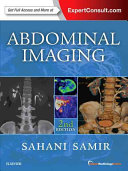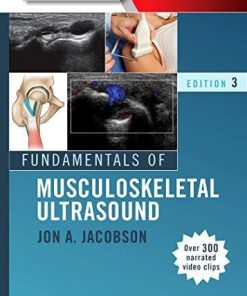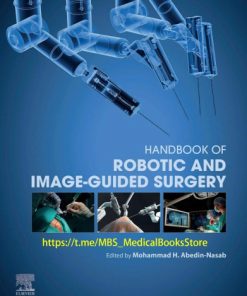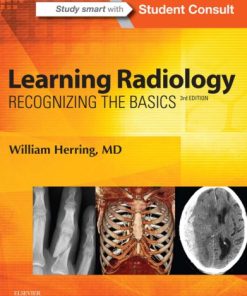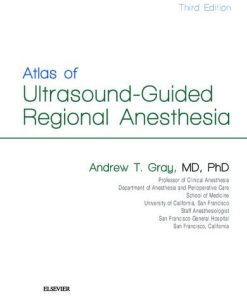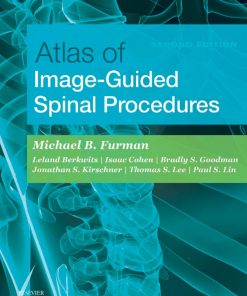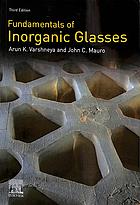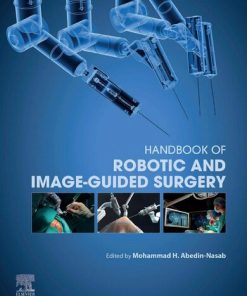Image Guided Interventions Expert Radiology Series 3rd Edition by Matthew Mauro 0323612067 9780323612067
$50.00 Original price was: $50.00.$25.00Current price is: $25.00.
Image-Guided Interventions (Expert Radiology Series) 3rd Edition by Matthew A. Mauro – Ebook PDF Instant Download/DeliveryISBN: 0323612067, 9780323612067
Full download Image-Guided Interventions (Expert Radiology Series) 3rd Edition after payment.
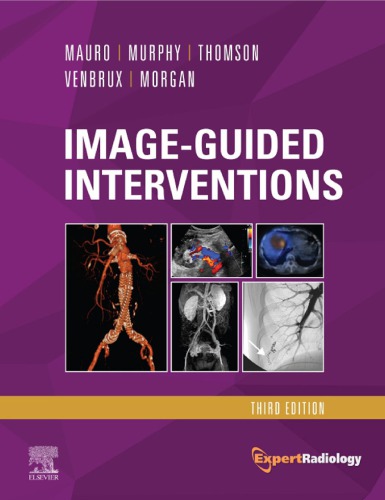
Product details:
ISBN-10 : 0323612067
ISBN-13 : 9780323612067
Author: Matthew A. Mauro
Image-Guided Interventions
Image-Guided Interventions (Expert Radiology Series) 3rd Table of contents:
Section A. History of Angiography and Intervention
1. A Brief History of Image-Guided Therapy
Historical Highlights of Endovascular Therapy
Endovascular Milestones
Summary
Historical Highlights of Nonvascular Image-Guided Therapy
Section B. Patient Care
2. Patient Preparation and Informed Consent
Patient Referral
Patient Contact
Patient Optimization
3. Clinical Vascular Examination
History
Risk Factors
Physical Examination
Bedside Procedures to Assist with Diagnosis
Summary
4. Treatment of Medical Emergencies
Oversedation
Airway Management and Optimization
Emergency Cardiac/Hemodynamic Events
Contrast Reactions
5. Radiation Safety and Protection in the Interventional Fluoroscopy Environment
Ionizing Radiation Risks
Practical Radiation Protection
Radiation Protection Program
6. Pharmacologic Agents Used in Image-Guided Interventions
Techniques for Providing Analgesia and Sedation
Indications and Goals of Analgesia and Sedation
Contraindications to Analgesia and Sedation
Equipment
Precautions for Providing Analgesia and Sedation
Pharmacology of Analgesic and Sedative Agents Commonly Used in Interventional Radiology
Summary
Section C. Principles of Vascular Intervention
7. Principles of Vascular Access
Preprocedural Patient Evaluation and Management
Basic Safety Considerations
Tools
Contrast Agents
Arterial Access
Venous Access
Imaging
8. Closure Devices
Manual Compression
Alternatives to Manual Compression
Section D. Peripheral Arterial Intervention
9. Vascular Anatomy of the Upper Extremity
Imaging Modalities of The Upper Extremity
Arterial Anatomy of The Upper Extremity
Venous System
10. Vascular Anatomy of the Lower Limb
Acute Arterial Disease
11. Acute Lower Extremity Ischemia
Indications
Contraindications
Equipment
Technique
Controversies
Outcomes
Complications
Postprocedural and Follow-Up Care
Summary
12. Revascularization: Upper Extremity
Subclavian and Brachiocephalic Disease
Indications
Contraindications
Equipment
Technique
Controversies
Outcomes
Complications
Postprocedural and Follow-up Care
Other Disorders of Upper Extremity Arteries
Imaging of Upper Extremity Arteries
13. Revascularization: Aortoiliac
Epidemiology
Anatomic Classification of Aiod
Clinical Evaluation
Imaging Evaluation
Management of Atheromatous Aiod
Preprocedure Patient Evaluation
Indications
Contraindications
Intervention
Procedural Antiplatelet and Anticoagulant Medication
Case Management
Complications
Procedural and Follow-up Care
14. Revascularization: Femoropopliteal
Lexicon and Nomenclature Updates
Diagnosis
Imaging of Vascular Anatomy
Management and Treatment
Evidenced-Based Revascularization
Surgical Revascularization Procedures
Endovascular Procedures
Pharmacotherapy During and After Intervention
Summary
15. Revascularization: Infrapopliteal
Indications
Contraindications
Equipment
Technique
Controversies
Outcomes
Complications
Postprocedural and Follow-Up Care
Section E. Vascular Malformations
16. Congenital Vascular Anomalies: Classification and Terminology
Vascular Tumors
Vascular Malformations
17. Management of Low-Flow Vascular Malformations
Indications
Contraindications
Equipment
Technique
Controversies
Outcomes
Complications
Postprocedural and Follow-up Care
18. Management of High-Flow Vascular Anomalies
Classification
Conclusion
Section F. Abdominal Vascular Intervention
19. Vascular Anatomy of the Abdominal Aorta and the Inferior Vena Cava
Abdominal Aorta
Inferior Vena Cava
20. Endovascular Aortic Repair
Clinical Relevance
Indications
Anatomic Inclusion Criteria for Endovascular Aneurysm Repair
Contraindications
Imaging
Device Selection
Technical Aspects
Controversies
Endoleaks and Management
Postprocedural and Follow-up Care
21. Fenestrated Stent-Grafting of Juxtarenal Aortic Aneurysms
Indications and Anatomic Suitability
Contraindications
Stent-Grafts on The Market
Newer Devices
Custom-Made E-xtra Design Engineering
Procedure Planning
Technique of Stent Insertion
Complications and Outcomes
Post-Procedure Care and Follow-Up
22. The Management of Thoracoabdominal Aortic Aneurysms by Branched Endograft Technology
Philosophy
Special Considerations
Technique
Outcomes
Conclusion
23. Endoleaks: Classification, Diagnosis, and Treatment
Clinical Relevance
Definition
Classification of Endoleaks
Significance and Incidence of Endoleaks
Diagnosis of Endoleaks
Alternative Follow-up Possibilities
Sequencing of Follow-up After Evar
Management of Endoleaks
Summary
24. Endovascular Treatment of Dissection of the Aorta and Its Branches
Indications for Intervention
Conclusions
25. Anatomy of Alimentary Tract Vasculature
Clinical Relevance
Vascular Imaging of The Alimentary Tract
Arterial Supply
Venous System
Liver Vasculature
Biliary System Vasculature
Spleen Vasculature
Pancreas Vasculature
26. Management of Upper Gastrointestinal Hemorrhage
Clinical Relevance
Diagnosis
Management
Indications
Contraindications
Anatomy
Equipment
Controversies
Outcomes
Complications
Postprocedural Care and Follow-Up
27. Management of Lower Gastrointestinal Hemorrhage
Clinical Relevance
Diagnostic Workup
Contraindications
Equipment
Anatomy and Approach
Technical Aspects
Controversies
Outcomes
Complications
Postprocedure and Follow-Up Care
Summary
28. Acute Mesenteric Ischemia
Indications
Contraindications to Percutaneous Treatments
Equipment
Technique
Controversies
Outcomes
Complications
Postprocedural and Follow-Up Care
29. Chronic Mesenteric Ischemia
Indications
Contraindications
Equipment
Technique
Controversies
Outcomes
Complications
Postprocedural and Follow-Up Care
Kidney
30. Renal Vasculature
Renal Vascular Anatomy
Adrenal Suprarenal Vasculature
Vascular Imaging of Kidneys and Adrenal Glands
31. Renal Ischemia
Indications
Contraindications
Equipment
Technique
Controversies
Outcomes
Complications
Postprocedural and Follow-Up Care
32. Renal Artery Embolization
Clinical Relevance
Indications
Contraindications
Equipment
Technique
Controversies
Outcomes
Complications
Postprocedure and Follow-Up Care
33. Transvenous Pressure Measurements and Liver Biopsy
Transvenous Pressure Measurements
Conclusions
Image-Guided Percutaneous Liver Biopsy and Transjugular Liver Biopsy
Conclusions
34. Chemoembolization for Hepatocellular Carcinoma
Clinical Relevance
Indications
Contraindications
Equipment
Technique
Complications
Outcomes
Controversies
35. Transcatheter Embolization of Liver Metastases
Embolization Techniques
Tumor Types
36. Embolotherapy for the Management of Liver Malignancies Other Than Hepatocellular Carcinoma
Clinical Relevance
Indications
Contraindications
Equipment
Technique
Controversies
Outcomes
Complications
Postprocedure and Follow-up Care
37. Portal Vein Embolization
Indications
Contraindications
Equipment
Technique
Controversies
Outcomes
Postprocedural and Follow-Up Care
Complications
Chapter 38. Intervention in the Liver Transplant Patient
Technical Features
Arterial Complications
Portal Vein Complications
Caval Complications
Biliary Complications
39. Management of Trauma to the Liver and Spleen
Imaging Work-Up
Imaging Findings
Indications for Angiography and Embolization
Contraindications for Angiography and Embolization
Goal of Embolization
Angiography Technique
Embolic Agents
Embolization Technique
Outcomes
Complications
40. Splenic Embolization in Nontraumatized Patients
Indications
Anatomy
Contraindications
Preprocedure Work-Up
Procedural Technique and Equipment
Complications
Postprocedure Care
Specific Pathologies and Outcomes
Conclusion
41. Management of Visceral Aneurysms
Indications
Contraindications
Relevant Anatomy
Preprocedural Imaging
Principles of Endovascular Techniques
Complications
Postprocedural and Follow-Up Care
Conclusion
Section G. Pelvic Vascular Intervention
42. Vascular Anatomy of the Pelvis
Arteries
Veins
43. Uterine Fibroid Embolization
Indications
Contraindications
Equipment
Technique
Controversies
Outcomes
Randomized Trials
Fertility and Pregnancy after Uterine Fibroid Embolization
Complications
Periprocedure and Follow-Up Care
44. Management of the High-Risk Obstetric Patient
Pathophysiology
Imaging
Indications
Contraindications
Methods and Materials
Arteriogram and Embolization
Preoperative Intraarterial Balloon Placement
Additional or Adjuvant Therapies
Outcomes of Endovascular Therapies
Complications
45. Management of Pelvic Hemorrhage in Trauma
Indications
Contraindications
Equipment
Technique
Controversies and Special Considerations
Outcomes
Complications
Postprocedural and Follow-up Care
46. Management of Male Varicocele
Incidence
Diagnosis
Indications
Contraindications
Equipment
Technique
Outcomes
Complications
Postprocedural and Follow-up Care
47. Management of Female Venous Congestion Syndrome
Clinical Relevance
Indications
Contraindications
Equipment
Technique
Equipment
Controversies
Outcomes
Complications
Postprocedure and Follow-up Care
48. Treatment of High-Flow Priapism and Erectile Dysfunction
Priapism
Erectile Dysfunction
Relevant Anatomy
Treatment of High-Flow/Nonischemic/Arterial Priapism
Cavernosometry and Cavernosography
Internal Pudendal Angiography and Angioplasty in Erectile Dysfunction
Retrograde Venous Occlusion in Venous Leak Erectile Dysfunction
49. Prostate Artery Embolization
Indications
Contraindications
Anatomy
Equipment and Technique
Periprocedure and Follow-Up Care
Current Literature
The future of Pae: Chemoembolization of Prostate Cancer?
Section H. Thoracic Vascular Intervention
50. Vascular Anatomy of the Thorax, Including the Heart
Systemic Arteries
Systemic Veins
Pulmonary Vessels
Lymphatic Drainage
Chapter 51. Management of Thoracic Aortic Aneurysm
Diagnosis
Treatment Modalities
Indications
Contraindications
Preoperative Evaluation
Anatomy and Approach
Equipment
Technique
Left Subclavian Artery
Postprocedural and Follow-up Care
Controversies
Summary
Chapter 52. Management of Acute Aortic Syndrome
Aortic Dissection
Aortic Intramural Hematoma
Penetrating Aortic Ulcer
Chapter 53. Embolization for Hemoptysis
Embolotherapy for Hemoptysis
Results
Complications of Embolization for Hemoptysis
Unusual Causes of Hemoptysis
Chapter 54. Pulmonary Arteriovenous Malformations: Diagnosis and Management
Etiology
Indications
Contraindications
Equipment
Technique for Embolization
Controversies
Complications
Postprocedural and Follow-Up Care
Outcomes
Chapter 55. Percutaneous Interventions for Acute Pulmonary Embolism
Indications for Percutaneous Intervention
Contraindications to Pharmacologic Thrombolysis
Modern Interventional Methods
Controversies
Outcomes
Complications
Postprocedural Anticoagulation and Care
Section I. Neurovascular and Head and Neck Imaging
Chapter 56. Craniocervical Vascular Anatomy
Craniocervical Arteries
Craniocervical Veins
Chapter 57. Arterial Anatomy of the Spine and Spinal Cord
Developmental Anatomy
Intrinsic Arterial Vascularization
Spinal Angiography
Chapter 58. Use of Skull Views in Visualization of Cerebral Vascular Anatomy
Chapter 59. Cerebral Functional Anatomy and Rapid Neurologic Examination
Review of Cerebral Circulation
Rapid Neurologic Assessment
The 60-Second Neurologic Examination
Summary
Chapter 60. Carotid Revascularization
Indications
Contraindications
Equipment
Technique
Periprocedural Management
Complications
Follow-up Care
Outcomes
Conclusions
Chapter 61. Acute Stroke Management
Indications
Contraindications
Equipment
Technique
Controversies
Outcomes
Complications
Postprocedural and Follow-up Care
Chapter 62. Endovascular Management of Chronic Cerebral Ischemia
Review of the Current Literature
Endovascular Treatment
Equipment
Technique
Controversies
Complications
Postprocedural and Follow-up Care
Chapter 63. Management of Head and Neck Tumors
Indications for Endovascular Therapy of Benign Head/Neck Lesions
Indications for Endovascular Therapy of Malignant Head/Neck Cancer
Contraindications
Equipment
Technique
Controversies
Outcomes
Complications
Postprocedure and Follow-up Care
Chapter 64. Endovascular Management of Epistaxis
Clinical Relevance
Treatment Options
Anatomy
Etiology
Indications
Contraindications
Equipment
Technique
Complications
Postprocedural and Follow-up Care
Summary
Chapter 65. Subarachnoid Hemorrhage
Signs and symptoms
Management
Treatment
Chapter 66. Management of Head and Neck Injuries
Indications
Contraindications
Equipment
Technique: Epistaxis, Facial Fractures
Technique: Common Carotid Artery, Internal Carotid Artery, and Vertebral Artery Dissections, Pseudoaneurysms, and Transections
Postprocedural And Follow-Up Care
Chapter 67. Cervical Artery Dissection
Clinical Presentation
Diagnostic Testing
Etiology
Management of Acute Cervical Artery Dissection
Long-Term Management of Dissecting Aneurysms and Persistent Stenosis
Summary
Section J. Venous Intervention
Chapter 68. Superior Vena Cava Occlusive Disease
Malignant Obstruction
Benign Obstruction
Indications For Intervention
Contraindications
Equipment
Technique
Outcomes
Complications
Postprocedural and Follow-up Care
Chapter 69. Chronic Lower Extremity Venous Occlusive Disease
Indications
Contraindications
Equipment
Technique
Controversies
Outcomes
Complications
Postprocedural And Follow-Up Care
Chapter 70. Acute Extremity Venous Occlusive Disease
Acute Lower Extremity Deep Venous Thrombosis
Upper Extremity Deep Venous Thrombosis
Chapter 71. Portal-Mesenteric Venous Thrombosis
Etiology
Clinical Presentation
Prognosis
Imaging
Treatment
Chapter 72. Caval Filtration
Indications
Contraindications
Controversial/Extended Indications
Equipment
Technique
Outcomes
Complications
Postprocedural and Follow-Up Care
Chapter 73. Percutaneous Management of Varicose Veins
Epidemiology
Evaluation
Treatment Strategies
Treatment Outcomes
Complications
Controversies
Chapter 74. Foreign Body Retrieval
Snares
The Difficult Inferior Vena Cava Filter Removal
Lost Guidewire and Catheter Fragments
Lost Endovascular Stents
Wires Caught on Inferior Vena Cava Filters
Knotted Catheter
Lost Embolization Coils
Lost Radiolucent Foreign Bodies
Central Venous Catheters Placed in an Artery
Air Embolism
Summary
Section K. Venous Sampling for Endocrine Disease
Chapter 75. Renal Vein Renin Sampling
Indications
Contraindications
Equipment
Technique
Controversies
Outcomes
Complications
Postprocedural and Follow-Up Care
Chapter 76. Adrenal Venous Sampling
Indications
Contraindications
Equipment
Technique
Controversies
Outcomes
Complications
Postprocedural and Follow-Up Care
Chapter 77. Parathyroid Venous Sampling
Preprocedure
Procedure
Postprocedure
Interpretation
Controversies
Conclusion
Section L. Intervention in Portal Hypertension
Chapter 78. Transjugular Intrahepatic Portosystemic Shunts
Treatment of Portal Hypertension
Indications
Alternatives to Transjugular Intrahepatic Portosystemic Shunt
Contraindications
Equipment
Technique
Controversies
Outcomes
Complications
Postprocedural and Follow-Up Care
Chapter 79. Retrograde Balloon Occlusion Variceal Ablation
Indications
Contraindications
Equipment
Technique
Controversies
Outcomes
Complications
Postprocedural and Follow-Up Care
Section M. Hemodialysis Access Management
80. Surveillance and Management of Failing Hemodialysis Access
Indications
Contraindications
Monitoring Examination
Surveillance Technology
Technique
Controversies
Outcomes
Complications
Postprocedural and Follow-up Care
81. Management of Clotted Hemodialysis Access Grafts
Contraindications
Equipment
Technique
Controversies
Outcomes
Complications
Postprocedure and Follow-Up Care
82. Percutaneous Arterial Venous Fistula Creation
History
Percutaneous Creation
Commonalities of Both Devices/Techniques
Summary
Section N. Venous Access
83. Peripherally Inserted Central Catheters and Nontunneled Central Venous Catheters
Indications
Contraindications
Equipment
Technique
Pediatric Considerations
Controversies
Outcomes
Complications
Postprocedural and Follow-Up Care
84. Tunneled Central Venous Catheters
Indications
Contraindications
Equipment
Technique
Complications
Postprocedure and Follow-Up Care
85. Subcutaneous Ports
Clinical Relevance
Indications
Contraindications
Equipment
Technique
Controversies
Outcomes
Complications
Postprocedure and Follow-Up Care
86. Thoracic Duct Embolization for Postoperative Chylothorax
Indications
Contraindications
Equipment
Technique
Controversies
Outcomes
Complications
Postprocedural and Follow-Up Care
Nonvascular Interventions
Section O. Percutaneous Biopsy and Drainage
87. Percutaneous Biopsy and Abscess Drainage in the Abdomen and Pelvis
Background
Percutaneous Biopsy
Percutaneous Abdominal Abscess Drainage
Summary
Section P. The Gastrointestinal Tract
88. Esophageal Intervention in Malignant and Benign Esophageal Disease
Indications
Contraindications
Equipment
Techniques
Controversies
Outcomes
Complications
Postprocedural and Follow-Up Care
89. Intervention for Gastric Outlet and Duodenal Obstruction
Indications
Contraindications
Equipment
Technique
Controversies
Outcomes
Complications
Postprocedural and Follow-Up Care
90. Preoperative and Palliative Colonic Stenting
Indications
Contraindications
Equipment
Technique
Controversies
Outcomes
Complications
Postprocedural and Follow-Up Care
91. Gastrostomy and Jejunostomy
Indications
Contraindications
Gastrostomy
Transgastric Jejunostomy
Section Q. The Biliary Tract
92. Management of Malignant Biliary Tract Obstruction
Indications
Contraindications
Equipment
Technique
Outcomes
Complications
93. Management of Benign Biliary Strictures
Indications
Contraindications
Equipment
Technique
Outcomes
Complications
Postprocedural and Follow-Up Care
94. Management of Biliary Leaks
General Clinical Considerations and Indications for Percutaneous Treatment
Contraindications
Equipment
Technique
Controversies
Outcomes
Complications
Postprocedural and Follow-Up Care
95. Percutaneous Cholecystostomy
Clinical Relevance
Indications
Contraindications
Equipment
Technique
Controversies
Outcomes
Complications
Postprocedure and Follow-Up Care
96. Management of Biliary Calculi
Clinical Relevance
Indications
Contraindications
Equipment
Technique
Outcomes
Complications
Postprocedure and Follow-Up Care
Section R. The Liver
97. Thermal Ablation of Liver Lesions
Ablative Modalities: Physical Properties and Technical Aspects
Indications for Treatment and Contraindications
Pretreatment Imaging
Imaging Guidance and Monitoring
Posttreatment Assessment and Follow-Up
Complications
Patient Preparation
Outcomes
98. Cryoablation of Liver Tumors
Indications
Contraindications
Equipment
Technique
Outcomes
Complications
Cryoablation Versus Radiofrequency Ablation
Postprocedural Follow-Up Care
Conclusion
99. Nonthermal Ablation of Liver Lesions
Chemical Ablation of Benign Liver Lesions
Chemical Ablation of Malignant Liver Lesions
Section S. The Genitourinary Tract
100. Percutaneous Renal Drainage Procedures
Indications
Contraindications
Preparation
Technique
Suprapubic Catheter Insertion
Renal and Perirenal Fluid Collections
Chapter 101. Ablation of Renal Cell Carcinoma
Ablation Devices
Indications
Contraindications
Technique
Complications
Follow-Up Care
Outcomes
Chapter 102. High-Intensity Focused Ultrasound Treatment of Genitourinary Lesions
Principles of Focused Ultrasound Imaging
Uterine Leiomyomas
Prostate Cancer
Indications
Contraindications
Equipment
Mrgfus Technique for Treatment of Uterine Fibroids
Controversies
Outcomes
Complications
Postprocedural and Follow-Up Care
Summary
Section T. The Thorax
Chapter 103. Percutaneous Biopsy and Drainage of the Lung, Mediastinum, and Pleura
Percutaneous Biopsy of the Lung, Mediastinum, and Pleura
Drainage of the Lung, Mediastinum and Pleura
Chapter 104. Lung Ablation
Basic Biophysics of Lung Ablation
Experience to Date
Advances in Thermal Lung Ablation
Current Role of Thermal Ablation Therapy in Lung Cancer
Chapter 105. Breast Biopsy and Ablation
Image-Guided Breast Biopsy
Ultrasound-Guided Interventions
Stereotactic and Tomosynthesis-Guided Interventions
Magnetic Resonance Imaging
Nuclear Medicine-Guided Biopsy
Postbiopsy Considerations
Localization Devices
Ablation
Conclusions
Chapter 106. Tracheobronchial Interventions
Tracheobronchial Balloon Dilation
Tracheobronchial Metallic Stent Placement
Section U. The Musculoskeletal System
Chapter 107. Image-Guided Percutaneous Biopsy of Musculoskeletal Lesions
Indications
Contraindications
Equipment
Technique
Controversies
Outcomes
Complications
Postprocedural and Follow-Up Care
Chapter 108. Ablation and Combination Treatments of Musculoskeletal Lesions
Clinical Relevance
Indications
Contraindications
Equipment
Technique
Controversies
Outcomes
Complications
Postprocedural and Follow-Up Care
Chapter 109. Vertebroplasty and Kyphoplasty
Indications
Contraindications
Preprocedural Workup
Technique
Special Topics
Complications
Postprocedural Care
Chapter 110. Percutaneous Disk Interventions
Pathogenesis of low Back Pain
Indication and Contraindications
Techniques
How to Choose the Correct Percutaneous Disk Treatment
Chapter 111. Peripheral Nerve Interventions
Suprascapular Nerve Block
Intercostal Nerve Block
Ilioinguinal And Iliohypogastric Nerve Block
Genitofemoral Nerve Block
Lateral Femoral Cutaneous Nerve Block
Conclusion
Chapter 112. Nerve Root and Facet Blocks and Pain Intervention
History
Anatomy
Indications
Mapping
Diagnostic Imaging
Contraindications
Drugs Used for Selective Nerve Root Block
Technique
Outcomes
Facet Joint Injection
Postprocedure and Follow-Up Care
Complications
Patient Selection
Medications
Patient Care
Potential Complications
People also search for Image-Guided Interventions (Expert Radiology Series) 3rd:
veterinary image guided interventions
mauro image guided interventions
intrauterine image guided interventions in pregnancy
penn image guided interventions lab
image guided interventions expert radiology series
Tags: Image Guided, Interventions, Radiology Series, Matthew Mauro
You may also like…
Medicine - Radiology
Abdominal Imaging: Expert Radiology Series 2nd Edition Dushyant V. Sahani
Engineering - Robotics & Artificial Intelligence
Medicine - Radiology
Learning radiology: recognizing the basics 3rd edition Edition Herring
Engineering
Fundamentals of Inorganic Glasses 3rd Edition by Arun Varshneya, John Mauro 0128162260 9780128162262
Engineering - Robotics & Artificial Intelligence
Handbook of Robotic and Image-Guided Surgery Mohammad 1st Edition H. Abedin-Nasab (Editor)



